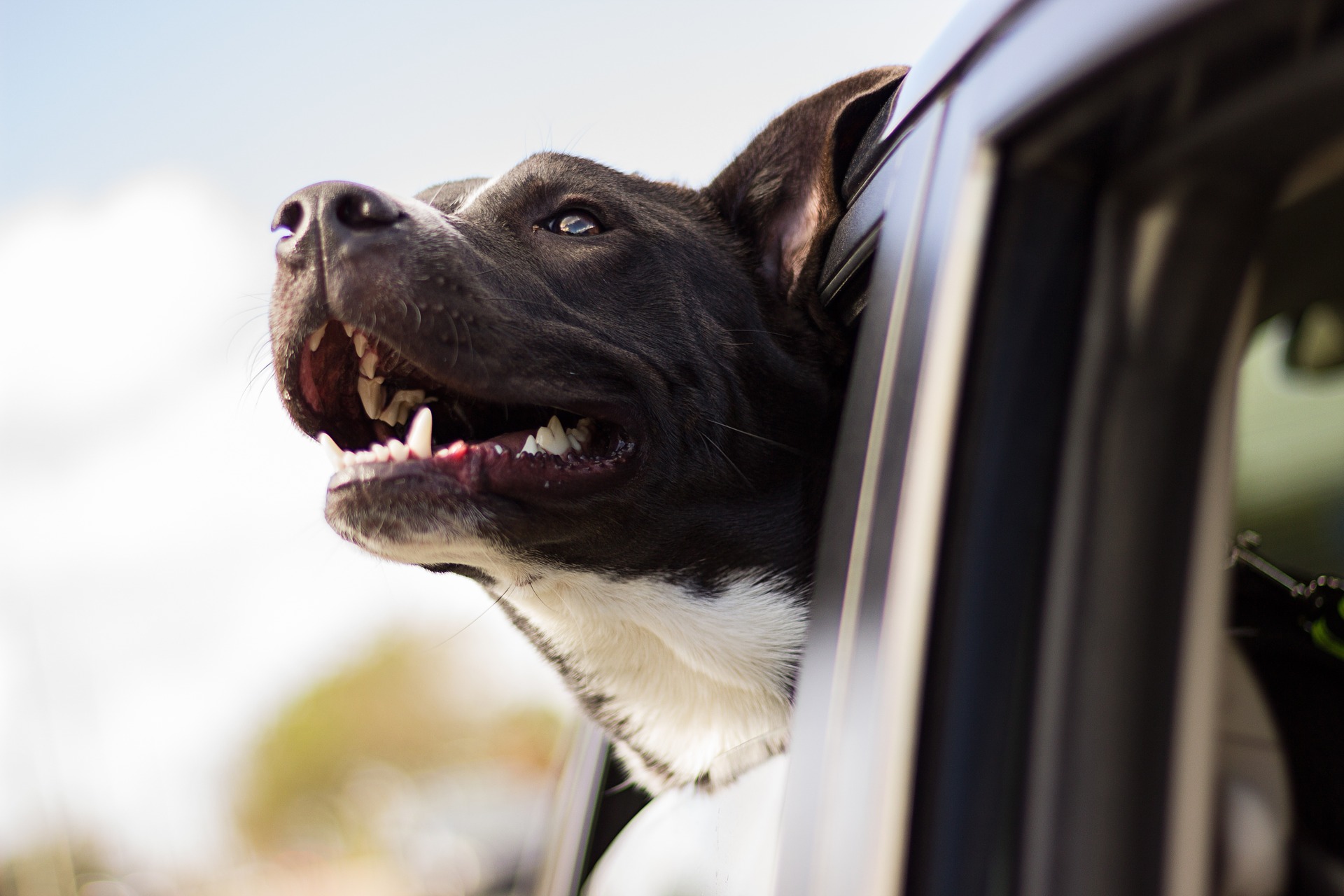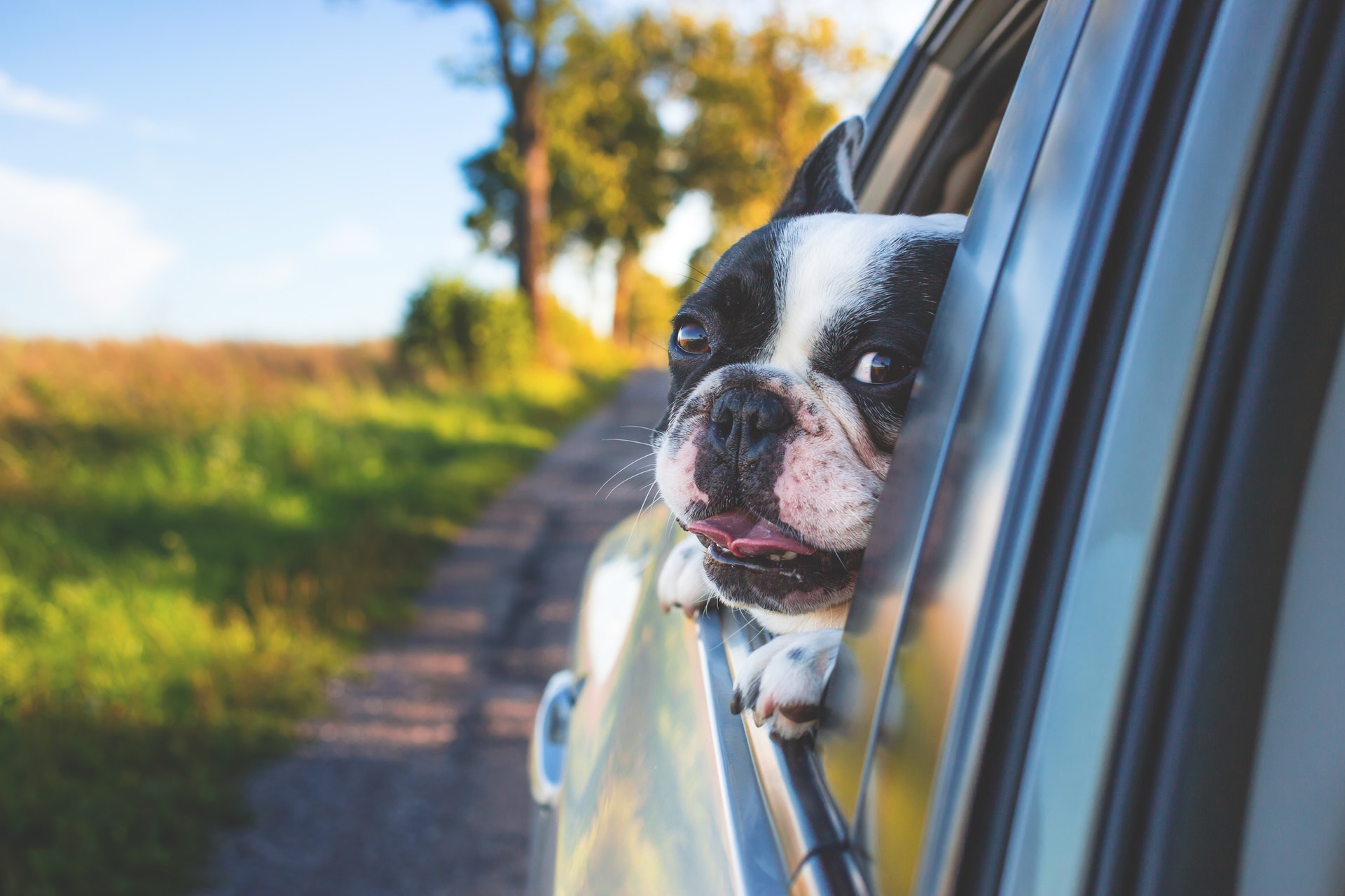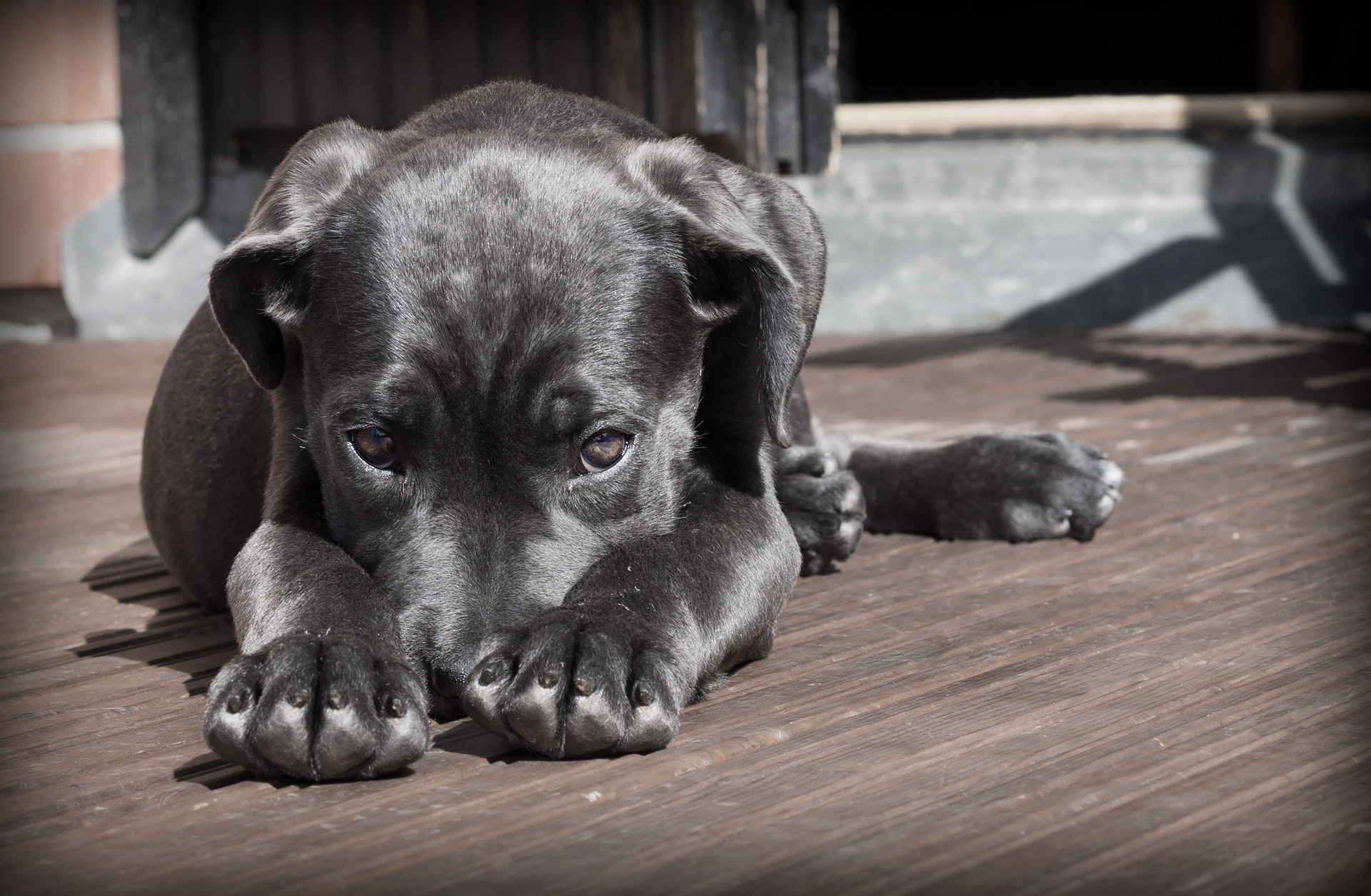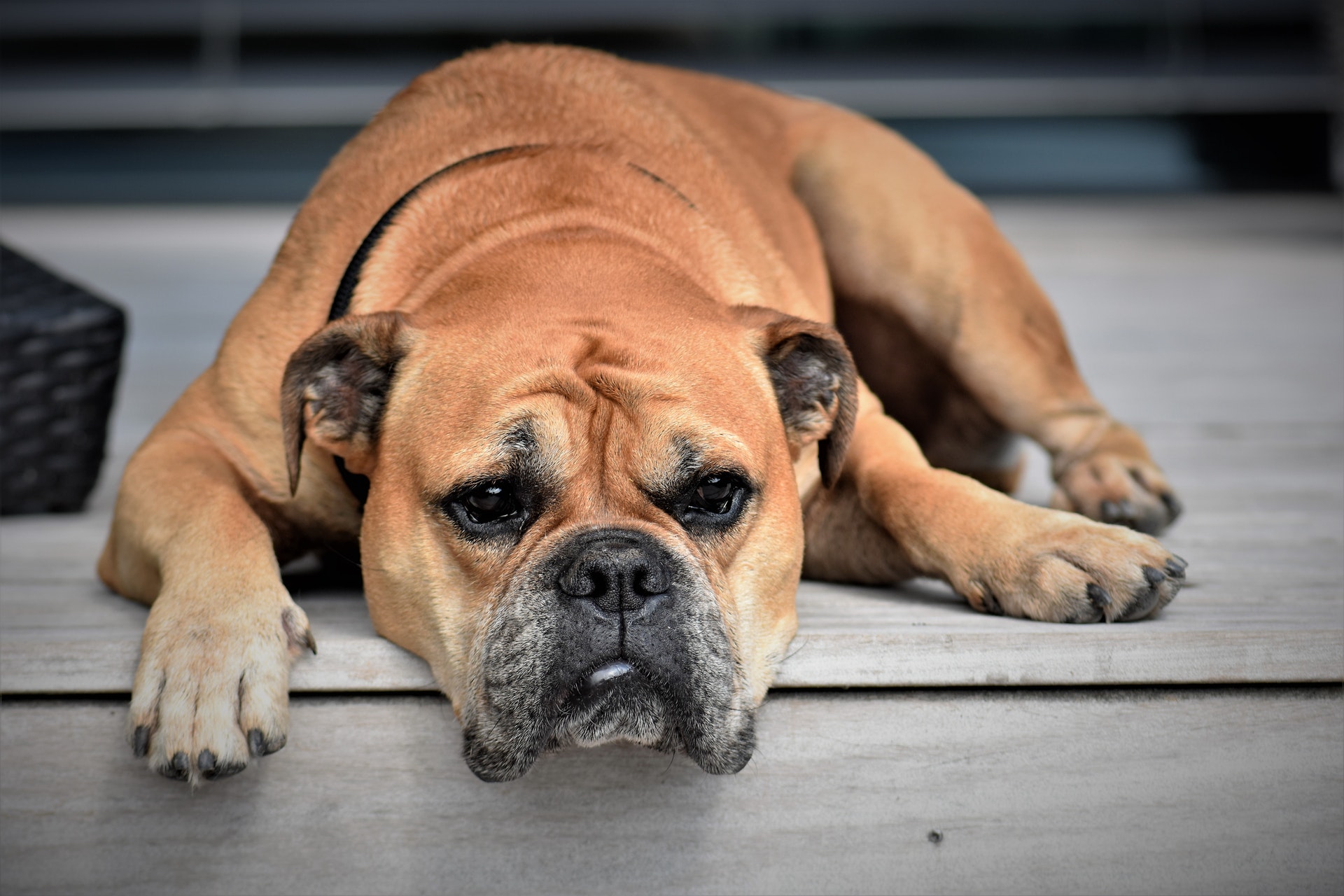Regardless of how long your journey is going to be, there are a number of ways you can help a dog with car anxiety.
The same solutions can work for both a quick ten minute trip to the store or a cross country road trip.
All that matters is being aware of the issue and figuring out what course of action is going to be best for assisting your pooch.
As with all canine anxiety issues the firsts step is understanding what is making your dog stressed.
Once this has been established there are plenty of potential solutions that ought to be tried before resorting to medication.
So in this post, we’ll cover the most common reasons why dogs may suffer car anxiety and work through the most frequently effective fixes for the problem.
Related: 5 Step-By-Step Calming Exercises To Instantly Cure Your Dogs Uncontrollable Anxiety

How To Tell If Your Dog Has Car Anxiety
Most of the time you will be able to tell that your dog is stressed out by the prospect of getting in the car.
They can do this by playing up or even resisting to get into the vehicle, or more commonly will start to exhibit signs of panic when in motion.
And regardless of breed, most dogs will display clear physical signs that they are uncomfortable.
Panting, barking, whining, drooling and in the worst case sickness and/or defecation are all clear signs that your dog is not at all happy.
And as a responsible owner, you should be aware of this and not just expect them to automatically ‘get used’ to it after a few minutes.
Because the truth of the matter is, most simply won’t.
You also need to bear in mind that some dogs do not demonstrate their fears in as overt a fashion as others.
Some may be entirely static and staring right ahead.
While this may be far easier to deal with from a human perspective, the fact is that they could well be literally scared stiff.
Therefore as the pack leader, it is your responsibility to do what you can to make your dog’s car experience less terrifying.
Why Do Dogs Have Car Anxiety?
Not all dogs are bothered by vehicles, but you need to be aware that regardless of how big and brave they may normally be, car anxiety can affect any breed or variety.
Those that are not used to regular trips are more likely to present problems.
Trips to the vet or previous vehicular trauma can both be side effects of traveling, so if your dog has previously experienced anything negative while riding in a vehicle, chances are they’re not going to be eager to get back in so soon
Generally speaking, dogs exposed to regular car trips from puppyhood will take more naturally to traveling in vehicles as they age but again, it is not a totally universal rule.
Behavior can alter due to experience.
The primary reasons why some dogs suffer from car anxiety are:
- Association with negative experiences
- Sensory overload
- Motion sickness
- Unexpected noise & motion
- Uncertainty & unfamiliarity
Of these five causes, the one that most owners will be familiar with is motion sickness.
Although do consider that psychological stress can physically manifest itself by vomiting.
We will discuss how to cope with this shortly, but for the other reasons, the key problem tends to be a more general unfamiliarity and unease with car travel.
These can be relatively straightforward to solve but do remember to stay patient.
The vast majority of dogs will learn to cope.
Some will just adapt quicker than others.
Related: 5 Step-By-Step Calming Exercises To Instantly Cure Your Dogs Uncontrollable Anxiety

How To Travel Comfortably With Your Dog
Without question, the first step in alleviating car anxiety is to ensure that the journey is going to be as cozy as possible.
Ideally, look to make a home away from home.
Some owners may consider using a dog crate.
While nobody likes to see their buddy caged up, for larger dogs it is a sensible safety consideration.
Should you be unlucky enough to have a collision or even need to brake suddenly, it will add a layer of additional protection for your dog, yourself and any passengers.
Of course, not all dogs are comfortable in crates (training that anxiety is an article in itself) so consider pods or harnesses appropriate to their size.
Whichever solution you opt for, make it the norm and use it every time without fail.

Does Food Help?
It may be tempting to try and appease your dog with a large meal before traveling but that is a bad idea!
Even dogs which do not usually suffer from motion sickness can become queezy with a full belly, especially if you unexpectedly hit a pothole.
Instead, you should aim to feed them about three hours before setting off and allow time for them to do their business beforehand.
And remember, do not feed your dog during the trip if it can be avoided.
Regular Breaks
When on the road allow plenty of time for quick breaks.
Be sure to pack water and a bowl so they can refresh themselves (stressed dogs will pant heavily and this can cause potentially dangerous overheating and dehydration).
Just a five-minute chance to stretch the legs and relieve themselves will go a considerable way towards making the journey easier on everyone.
While on the road it is essential to keep as fresh and comfortable an environment as possible.
Unless it’s blowing a blizzard try and open the windows a couple of inches (many dogs dislike air conditioning) for a gentle breeze.
Unless your dog is a happy and seasoned car traveler avoid any loud music, games or discussions and just keep it as relaxed and mellow as possible.
Provide a blanket if appropriate and a couple of familiar toys and try to avoid any sudden turns or changes in speed.
Ideally, it is a good idea to have a passenger sat by the dog throughout the journey.
There is no need to provide constant cuddles and calm unless it becomes clearly stressed.
But just having a familiar person occupying the next seat will go a long way towards a low-stress journey.
And if your dog is crated, then an occasional tasty treat should be enough to make up for lack of petting.
Related: 5 Step-By-Step Calming Exercises To Instantly Cure Your Dogs Uncontrollable Anxiety

How To Help A Dog With Car Anxiety
Familiarizing Your Dog With The Car
OK, so far we have covered the essentials for how to keep a dog as happy and stress-free as possible during a car journey.
But what about the minority who simply cannot stand the very thought of getting into a vehicle?
Obviously, the last thing anyone ought to consider is picking up a panicking dog, flinging them inside and slamming the door shut.
All that would achieve is further enforcing a negative impression of the car when you should instead be looking to foster a positive reaction.
Try this instead…
Stage 1
Walk very slowly towards the car. Reward your dog with treats every few steps as you both grow closer.
Do not open the door yet – instead repeat the process several times while gradually reducing the number of treats it takes to encourage your dog all the way up next to the vehicle.
Stage 2
Now perform the same routine but open the door at the end. Place a treat on the seat that is accessible without requiring the dog to fully enter.
Repeat again several times.
Stage 3
Here is where the positive reinforcement comes in.
Place a few very tasty treats inside the vehicle that will require a little exploring to discover (keep these away from the driver’s seat).
While your dog seeks them out, offer gentle words of encouragement and congratulate them for each one they find.
Stage 4
When they are comfortable with being fully inside the car, try closing the door very briefly.
Just a couple of seconds to begin with. Open the door, pass a reward, and allow them to hop out of they wish. Keep repeating this process until they can last a minute without displaying signs of stress/panic.
Stage 5
At this stage congratulate yourself and your dog for being patient!
So when the rear door is closed, get in yourself and reward your dog with a treat and sit calmly for a moment.
If you observe any stress then try and calm them down.
Turn on the engine for several seconds, then turn it off and reward the dog. Let out the dog and repeat the process a few more times.
Stage 6
Once this is seemingly second nature, it’s time for a quick drive.
It’s a good idea at this stage to bring another person to sit by your dog for the first few laps of the neighborhood.
If they panic, then your training buddy can put them on the leash and walk them home to try again.
It may take a while, but with practice, they will become more at ease.
If you can make a ten-minute journey in peace (for you and your dog) then consider taking on a longer distance.
Related: 5 Step-By-Step Calming Exercises To Instantly Cure Your Dogs Uncontrollable Anxiety
Coping With Motion Sickness
 Car sickness is a common problem and one that can be difficult to solve.
Car sickness is a common problem and one that can be difficult to solve.
Frustrating as it may be, the first aspect to consider is to keep your cool and be prepared.
There’s no point in becoming angry at your dog and this will only add to any discomfort and anxiety further.
If you think that your dog might become sick while driving, then make sure you take action before the journey.
If the problem is very occasional and you only take rare short journeys together, having a cleanup kit and seating your dog in a puppy pod should be ok.
And remember, do not feed your dog for at least three hours before your trip and obviously allow them the chance to empty themselves beforehand.
While driving, try and position your dog so that it is facing forward but at an angle, so it can also see out of a side window as this can help reduce both anxiety and sickness in some cases.
Unfortunately, it is near impossible to train a dog not to be the victim of travel sickness.
The real issue is determining how much this has to do with actual motion, or if it is a stress reaction.
In these cases, it is simply necessary to consult with your vet.
Dogs which rarely display any other symptoms of anxiety (separation barking, destructive behavior, repetitive pacing etc) are most likely vomiting due to the motion.
Those who are more generally nervous may be falling foul to stress reactions or a combination of both.
Either way, it is likely that they will cause a fuss when they understand that they are about to get into the car.
Medication
Upon the first appointment, most vets will suggest over the counter remedies first.
Most of these are based upon scent and hormones, and as with 99% of dog remedies.
It can work for some dogs but not others. So don’t pin all your hopes on this one.
Prescription medications (usually Cerenia injection or tablet) are another alternative but they will not remove the discomfort if it happens to be caused by stress.
So under these circumstances, a more general approach as described above ought to be carried out to help your dog stay calm when in a vehicle.
Other Approaches To Consider
 There are a number of different programs out there to help make your dog feel more comfortable during transit.
There are a number of different programs out there to help make your dog feel more comfortable during transit.
A good place to start simply is to make them associate car travel with positive experiences.
We’ve already seen how tasty treats can be used to help them jump onboard, but instead how about taking a short drive to nearby park/wood/beach that leads to a fun long walk?
Dogs may enjoy familiarity but they also do get bored, so a routine or weekly trip out to explore new territory will over time prompt them to associate the car with pleasure.
Another option that plenty of owners report having enjoyed success with is the use of ThunderShirts (similar products are available!) to help reduce symptoms of anxiety.
These can indeed work wonders with dogs who are calm enough to wear them, but some may find them to be uncomfortable and even counterproductive when helping to reduce their travel anxieties.
If all else fails, then a frozen puzzle toy or tasty chewable may be worth a shot to distract them from their stress – especially if your dog usually travels in a cage.
Final Thoughts
Helping your dog feel comfortable when on the road can be a very rewarding achievement if you get it right.
And while the vast majority of dogs with car anxiety can be helped without medication.
You should be aware that it may take plenty of practice to get there.
Without question, the key to developing an excellent travel buddy is in helping them realize that not only is there nothing scary about the car…
…but that taking a ride usually turns out to be great fun!
Regular trips will help this become a norm, and rather than your dog panting out of fear it will be panting out of anticipation and excitement.
Being able to easily travel with your dog will help strengthen your bond even further.
After all, dogs want to be part of the pack and there’s nothing they tend to like more than exploring new places and taking in a change of scenery.
So stick at it and if all else fails, try these 5 Step-By-Step Calming Exercises
But in most cases, a little practice will go a long way, so follow the advice above and best of luck!
Do you have any other ways to help a dog with car anxiety? Let me know in the comments below…